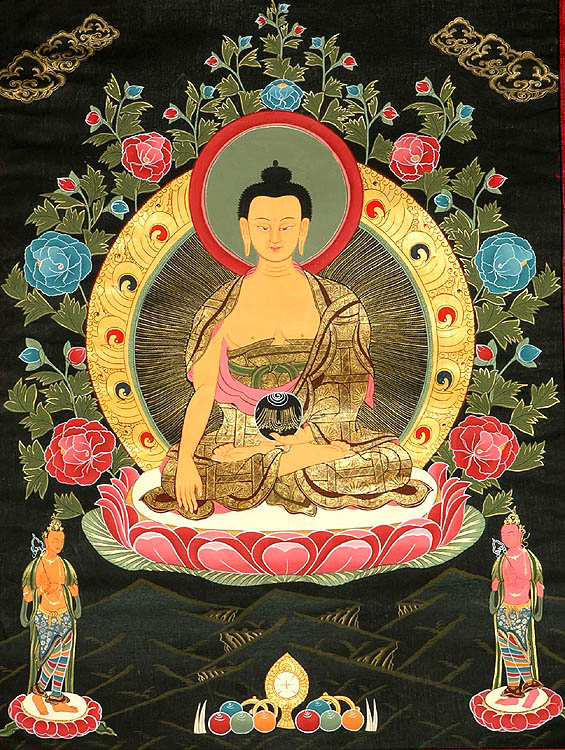
A Celebration of Women
Celebrates
The BIRTH of BUDDHA!
As same as other traditional holidays like New year, Japanese culture “translates” every traditional festival’s date into Gregorian calendar’s one. …
The 4th month in Chinese Lunar Calendar is translated into April or May.

Therefore Buddha’s Birthday is celebrated on April 8 or May 8 in many Japanese temples.
*Original date in Chinese Calendar is hardly used.
Nepal
The birth of the Buddha is often celebrated by Buddhists in Nepal for an entire month in the Buddhist calendar. The actual day is called Buddha Poornima (or Buddha Purnima), also traditionally known as Vaishakh Poornima.

Although the day marks not just the birth of Shakyamuni Gautam Buddha,

but also the day of Enlightenment, and Mahaparinirvana.
But as a gentle effect of West, the event of Birth is given paramount importance.
The event is celebrated by gentle and serene fervour, keeping in mind the very nature of Buddhism. People, especially women, go to common Viharas to observe a rather longer-than-usual, full-length Buddhist sutra, as something like a service. The usual dress is pure white. Non-vegetarian food is normally avoided. Kheer, a sweet rice porridge is commonly served to recall the story of Sujata, a maiden who, in Gautama Buddha’s life, offered the Buddha a bowl of milk porridge after he had given up the path of asceticism following six years of extreme austerity. This event was one major link in his enlightenment.
It is said that the Buddha originally followed the way of asceticism to attain enlightenment sooner, as was thought by many at that time. He sat for a prolonged time with inadequate food and water, which caused his body to shrivel so as to be indistinguishable from the bark of the tree that he was sitting under. Seeing the weak Siddhartha Gautama, a girl named Sujata placed a bowl of milk in front of him as an offering. Realizing that without food one can do nothing, the Buddha refrained from harming his own body.
India
Birth of Buddha or Tathagata is celebrated in India, especially in Sikkim, Ladakh, Arunachal Pradesh, Bodh Gaya and Maharashtra (where 6% of total population are Buddhists) and other parts of India as per Indian calendar.

Buddhist People go to common Viharas to observe a rather longer-than-usual, full-length Buddhist sutra, as something like a service. The usual dress is pure white. Non-vegetarian food is normally avoided.

Kheer, a sweet rice porridge is commonly served to recall the story of Sujata, a maiden who, in Gautama Buddha’s life, offered the Buddha a bowl of milk porridge.
Japan
In Japan, Buddha’s Birthday is also celebrated according to the Buddhist calendar but is not a national holiday. On this day, all temples do celebratory events/festivals called Kanbutsu-e (Japanese), (Goutan-e),(Busshou-e),(Yokubutsu-e), (Ryuge-e), (Hana-eshiki) or (Hana-matsuri, meaning ‘Flower Festival’).

The first event was held at Asuka-dera in 606. Japanese people pour ama-cha (a beverage prepared from a variety of hydrangea) on small Buddha statues decorated with flowers, as if bathing a newborn baby.
Korea
In Korea the birthday of Buddha is celebrated according to the Lunisolar calendar. This day is called (Seokga tansinil), meaning “the day of Buddha’s birthday” or (Bucheonim osin nal) meaning “the day when Buddha arrived”. Lotus lanterns cover the entire temple throughout the month which are often flooded down the street.
On the day of Buddha’s birth, many temples provide free meals and tea to all visitors. The breakfast and lunch provided are often sanchae bibimbap.
Sri Lanka
This is one of the major festivals in Sri Lanka. It is celebrated on the first full moon day of the month of May.

People engage in religious observances and decorate houses and streets with candles and specially made lanterns.
Other countries
Some places have a public holiday one week later, on the fifteenth day of the fourth month in the Chinese Lunar Calendar, to coincide with the full moon. For instance, Visakha Puja in Thailand or Lễ Phật đản in Vietnam was such a holiday on May 12 in 2006.

Other countries including Singapore and Malaysia also celebrate Vesak Day, on the fifteenth day of the fourth month in the Chinese Lunar Calendar, a public holiday in these two countries.

BUDDHA’S MOTHER & FATHER:
Queen Māyā and King Suddhodhana did not have children for twenty years into their marriage. One day however, according to legend, Queen Māyā dreamt of a divine Bodhisattva on white elephant touching her side, and became pregnant.
According to Buddhist tradition, the Buddha-to-be was residing as a Bodhisattva, in the Tuṣita heaven, and decided to take the shape of a white elephant to be reborn, for the last time, on Earth.
Māyā gave birth to Siddharta c. 563 BCE. The pregnancy lasted ten lunar months. Following custom, the Queen returned to her own home for the birth. On the way, she stepped down from her palanquin to have a walk under the ashoka trees in the beautiful flower garden of Lumbini Park, Lumbini Zone, Nepal.

She was delighted by the park and she reached for an ashoka branch to take a rest. Again according to legend, at this time Prince Siddhārtha emerged from her right side and was born.
It was the : Eighth day of April.
She gave him his first bath in the Puskarini pond in Lumbini Zone. Siddhārtha means “He who has accomplished his goals” or “The accomplished goal”.
Queen Māyā died seven days after the birth of the Buddha-to-be, and went to the Tuṣita Heaven. Her sister Prajāpatī (Pāli: Pajāpatī or Mahāpajāpatī Gotamī) became the child’s foster mother.
After Prince Siddhartha had gained perfection and became the Buddha, he visited his mother in heaven for three months to pay respects and to teach the Dharma.
TIBET









